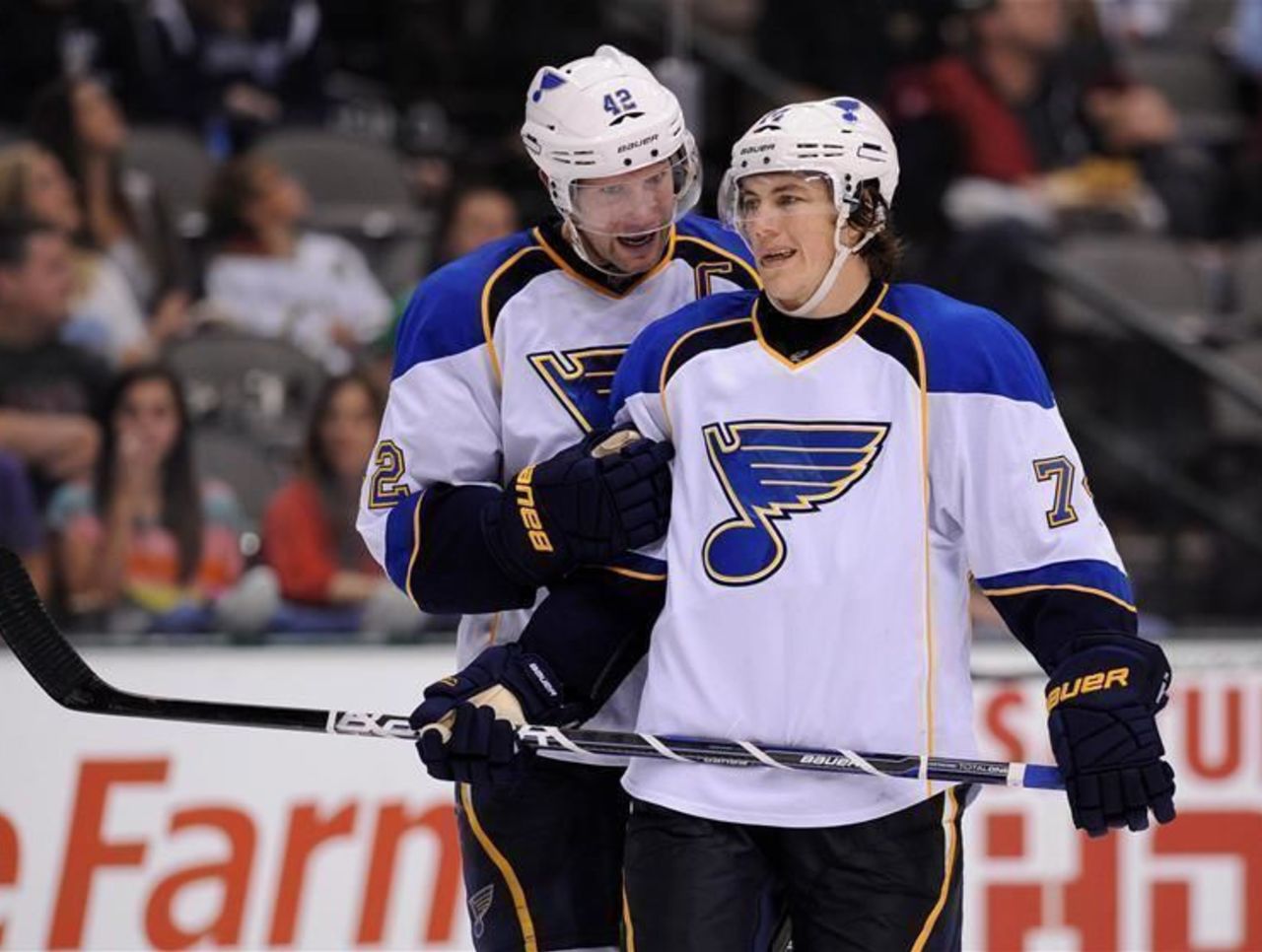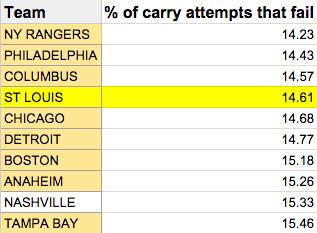Unique Team Traits: Ken Hitchcock's style keeps the Blues from racking up shots
theScore’s multi-part team previews include a look at something that separates each team from the pack. From specific breakouts to power-play formations and beyond, Justin Bourne and Thomas Drance hope to highlight something you haven’t noticed in the past.
What we noticed
Ken Hitchcock's conservative coaching style seems to limit the Blues shot output
Nobody’s ever accused Ken Hitchcock of coaching his hockey teams to play like the Russian Red Army, and the Blues of 2013-14 provided the latest reminder why. From his Dallas teams on out, he’s always preferred the safe play to run-and-gun hockey.
This “safety first” approach to decision making (particularly through the middle) has worked well for St. Louis, who’s been a home ice playoff team in the West three straight seasons. What it does do, unfortunately, is limit the offense of a roster that wasn’t exactly dripping with it. Being careful with the puck is great when you’ve got natural producers; when you don’t, you can run into problems scoring. That they’ve won a mere five playoff games through four series over three years speaks to that.
The numbers

When players come to St. Louis and play the Hitchcock way, their offense tends to wither like cotton candy dropped in hot water. Alex Steen was one of the rare players to statistically excel under the Blues bench boss, as he led the team with a whopping 62 points.
The only teams with a leading scorer lower than that were Buffalo, Calgary, Carolina, Detroit, Florida, Nashville, Phoenix and Vancouver. Those aren’t exactly 111 point teams (only Detroit made playoffs), which just goes to show it’s about the whole, not the sum of individual parts in St. Louis.
What happens to the shot rates of those individual parts there is pretty drastic.
Here’s an interesting paragraph on David Perron from Sportsnet's Elliotte Friedman almost exactly a year ago:
“David Perron scored five goals on his first six exhibition shots [in Edmonton]. That's somewhat unsustainable, but certainly speaks to his talent. Perron and Ken Hitchcock clashed on things like how to approach a two-on-two rush. The forward always wanted to try for a scoring chance, the coach wanted a safer play (like a dump-in) if Perron could only achieve such an opportunity about one-quarter of the time. It will be interesting to see how he does as a more unleashed offensive player."
(Emphasis mine.)
David Perron's Hitchcock shot rate: 5.41 shots-per 60 minutes
David Perron's Oilers shot rate: 8.52 shots-per 60 minutes
The Blues did manage an elite Corsi for percentage, but in terms of raw shot differential just didn't generate as many shots for as the serious contenders. They allowed the fewest shots against per 60, but took two fewer shots per game than the Kings, four fewer than the Blackhawks and five fewer than the Sharks. In all, they finished 23rd in the NHL in shots per game, with 27.8.
What’s interesting is that in terms of zone entries the Blues were actually efficient in all facets and were well above average in shots per carry, shots per controlled entry and shots per dump in.
The reason? Well, let’s get to that.
The breakdown

You’re going to post efficient zone entry numbers when you’re making safe decisions. If the team is trained to think dump-in on 50/50 situations, they’re going to have guys going hard to retrieve pucks because it’s expected. You’re also going to minimize turnovers there, as it’s hard to turn the puck over when you’re just firing it into the zone. It also seems as though St. Louis dumps the puck fairly strategically, favoring light dumps and chips so the puck doesn’t rim around for the goalie to handle.
Once you’re thinking dump-first, you’re only going to carry the puck in when things are wide open. That means you’re going to have a good chance to create a shot, which means your numbers are going to look good there, too.
This chart below is the 10-teams who failed the least last season trying to gain the opposing zone with the puck. Highlighted teams made playoffs.

This shows being smart at the blue-line is pretty important. The failure rates get considerably larger as you move away from playoff teams.
What frustrates players, particularly elite NHLers, is that being safe limits the use of skill (instead forcing guys to crash and bang more), and most would rather try to create. I cribbed this neat example of the Blues’ ability to skate and move the puck:

So, they’ve got the necessary tools.
The problem is sometimes trying to make a play at the blue-line when your opponent is playing nice D results in a turnover, which can result in visible, directly connectable rushes than can sour coaches.

You know Hitch was losing his mind on the bench after that. It was an even-man situation, and he wants that deep. Now look at the game clock.
Next shift, Norris contender Alex Pietrangelo carries the puck in against a comically bad gap, and heeds his coach’s advice. It takes real discipline to willingly make the wrong play because your boss has told you to.

That’s just one of a zillion clips you can grab where the Blues don’t take the puck east-to-west, and instead try to force something north-south. Look at Vladimir Tarasenko, scraping the ceiling in the slot there. Too risky, apparently.
The Blues will be all right playing this way, and they’ll continue to win a bunch in the regular season. I’m willing to bet that if they find post-season success it will be on the heels of their consistent shot-suppression being complemented by the addition of Paul Stastny, and an increase in contribution from their young skill.